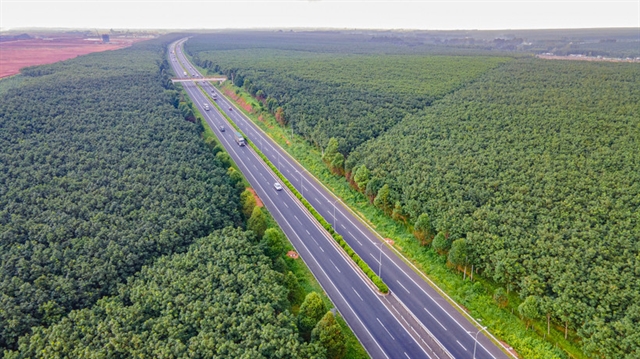 Economy
Economy


|
| A shipper of Giao Hàng Tiết Kiệm. Technology would help logistics companies to reduce costs and increase efficiency in the booming e-commerce. — Photo yeah1.com |
HÀ NỘI — Tech is rapidly changing the e-logistics landscape, raising the need for Việt Nam to increase the application of advanced technologies to develop an efficient logistics industry to grab opportunities arising from e-commerce.
According to Trần Thanh Hải, deputy director of the Import-Export Department, Việt Nam has a young population with fast access to technology together with a digital economy market forecast at more than the US$50 billion, providing great potential for e-commerce and e-commerce logistics.
While logistics costs in Việt Nam remain high, Hải said it was necessary to use technology to improve efficiency.
A report by global supply chain service provider Aligity last year showed the logistics cost in Việt Nam was more than 20 per cent of GDP, compared to the world average of 11 per cent.
Hải pointed out several problems in the logistics industry, including weak linkage of the transport infrastructure system and heavy dependence on roads.
He said technology had been applied in logistics activities such as apps or platforms to share transport vehicles and optimise warehouse usage. AI was also used to automate warehouse management processes.
Applying technology in logistics would help lower costs and increase efficiency, he said.
Especially in e-commerce with many delivery orders but in different locations, automation would help increase efficiency, reduce time and increase accuracy, Hải stressed.
In e-commerce, the difference between urban and rural areas created a cost problem for many logistics service providers.
Rural areas in Việt Nam were characterised by a wide geographical range and low population density. Shopping rates were also not as high as in the city, so deliveries covered a long distance.
The cost factor might not lie in the success rate of the first delivery, but in the distance travelled, Hải said, adding that enterprises could cooperate to build warehouses in nearby districts.
Automated delivery solutions such as drones should also be considered to help shorten travel distance. Such technologies could operate regardless of terrain.
Phan Xuân Dũng from logistics provider Ninja Van Việt Nam said the number of e-commerce delivery orders tripled in the past five years. When orders increased rapidly, if enterprises did not have solutions, the system would overload and costs increase.
Dũng said technology would be the decisive factor in reducing logistics costs and improving efficiency. — VNS




